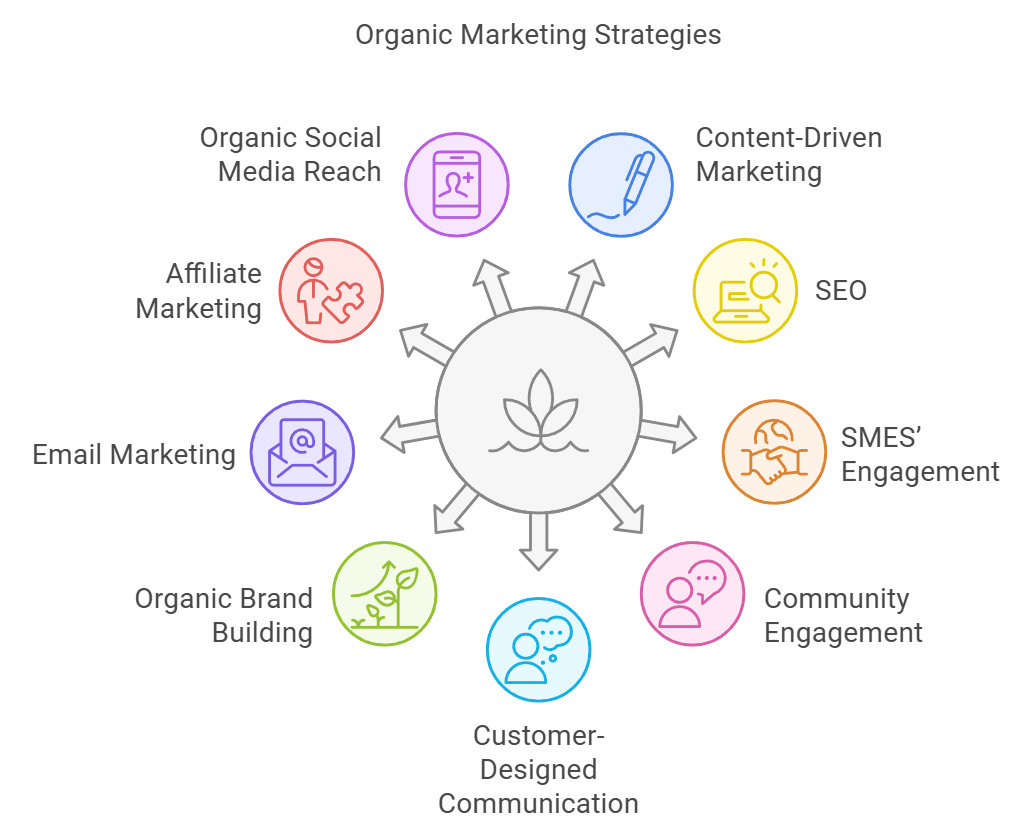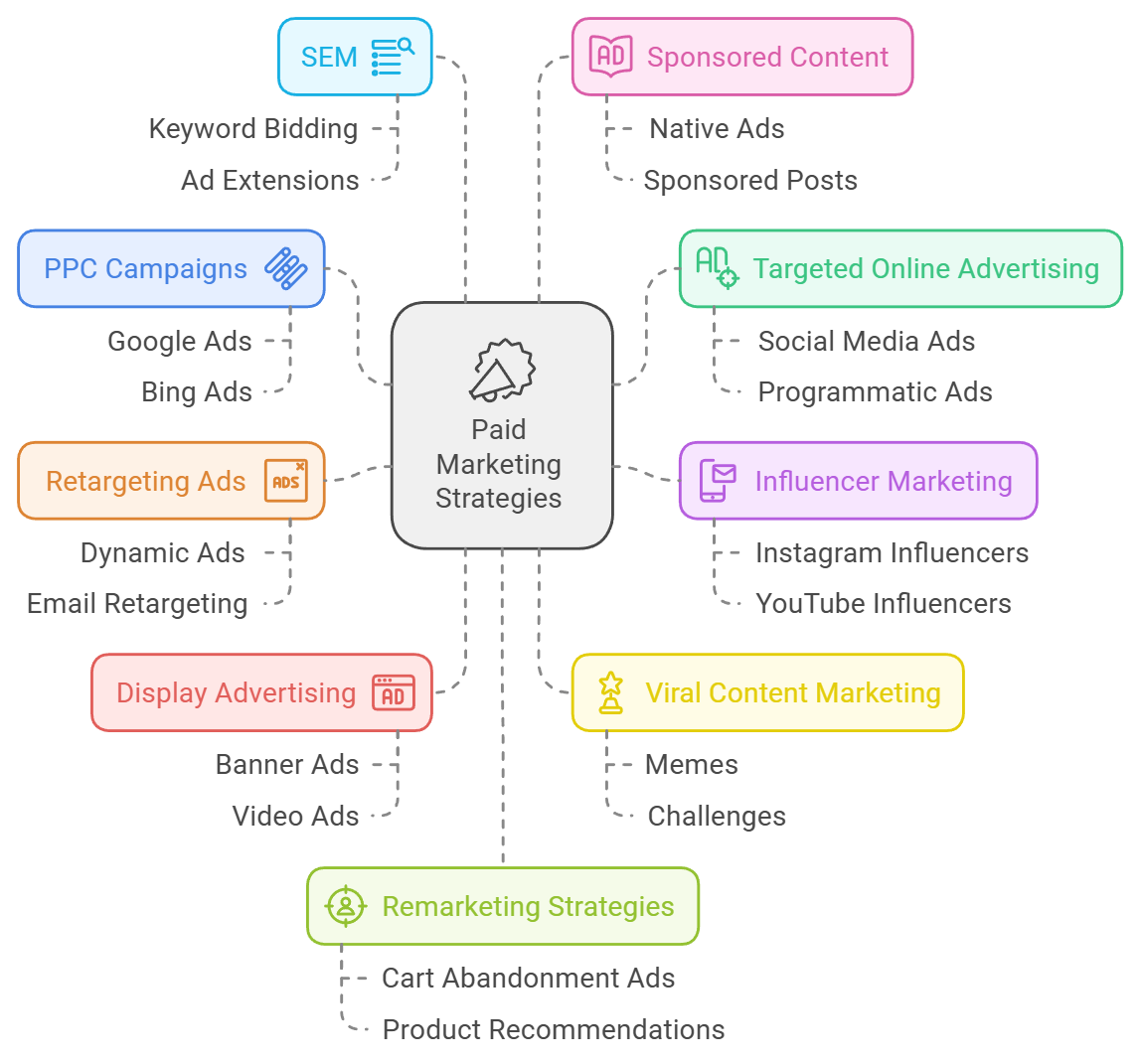Introduction

Overview of Organic vs Inorganic Marketing Strategy
Organic marketing is strategic action that brings web traffic without an enticing promotion tool being involved in the process. Such is the content that gets to the top of the search, using ‘likes’ on social networks or interacts with customers through useful information. On the other hand, there is paid or inorganic marketing that include paid advertisements, which means that you will have to invest in them; examples include PPC advertisements, paid sponsorship on the social media platform, and display advertisements.
Both methods have their own benefits and drawbacks: Organic marketing is people’s trust and their adherence to a brand; paid marketing is an instant and tangible outcome. When used together they provide a robust marketing mix which, if implemented right, can foster sustainable growth and extremely quick scalability.
Why a Balanced Approach of Organic vs. Inorganic Marketing is Key for Scaling Your Business
Marketing then combines the two aspects, the organic and the paid approach. Here, organic marketing enables businesses to create brand recognition hence brand loyalty while on the other hand paid marketing enhances visibility hence fast results. In combination, such strategies help to address the need for business to reach more customers and interact with them base, and then turn them into base.
Using a blend of Organic vs. Inorganic Marketing brings several benefits:
• Increased reach: Paid promotions on the other hand increase its exposure immediately while organic techniques on the other hand, will maintain the interaction levels.
• Enhanced credibility: Organic content helps to establish a degree of credibility, paid post helps to promote your brand.
• Cost-efficiency: The audits show that usage of organic marketing as a strategy can minimize the expenses incurred on paid advertisements in the long run.
• Adaptability: A blended approach is capable of producing fast change according to the analytical data and results obtained.
Organic Marketing Strategies for Sustainable Growth

When it comes to building sustainable forms of marketing, organic marketing cannot be overemphasized. Here are some essential strategies:
1. Content-Driven Marketing
• Produce useful and informative blog posts, articles and guides for your targeted public. This content establishes the brand in the market and enables you to attain the best ranking for the marketplace.
2. Search Engine Optimization (SEO)
• Enhance the quality of your website as well as your content through keywords, metadata and back links. It also needs to be noted that SEO has the capability and actually makes sites more noticeable in search engines, which in turn brings organic traffic.
3. SMES’ Engagement Strategies
• Keep posting on your site actively on the social media platforms such as Instagram, Twitter, and face book. Interact with the comments, tell stories and be genuine.
4. The goal and objectives of community engagement techniques cannot be overemphasized for any community wishing to undertake development projects.
• Initiate and join Online Communities. Organizing chat sessions, or Question & Answer or Webinar sessions help customers to better identify themselves with the brand.
5. Customer-Designed Communication and Stories
• The use of review suggestions, user content and testimonials helps in the building of credibility of the website.
6. Organic Brand Building
• Share your brand’s tone and message across all platforms through value provided by regular blogging and posting.
7. Email Marketing Campaigns
• Communicate with leads and the existing customers through sending regular newsletters, new product information or discounts.
8. Affiliate Marketing Programs
• Selling your products and services through affiliates and giving them a percentage of the sale as their cut, which means you get targeted traffic naturally.
9. Organic Social Media Reach
• Promote your profile or page on social networks more often without posting paid ads and share quality content often.
Paid Marketing/Inorganic Marketing Strategies for Rapid Scaling

When to Use Organic vs. Inorganic Marketing
Measuring Success and Optimizing Your Blended Strategy
• SEO Performance: Keywords ranking and organic search Other metrics you must monitor ensure that they remain optimal for your site include the rank of the keywords and the traffic generated from the organic searches.
• Lead Generation: Determine the quantity of leads that flowed through organic channels.
• Conversion Rate: Measure the percentage of people who perform a certain behavior you want such as buying a product.
• Return on Ad Spend (ROAS): Determine the revenue made for each sites as a result of the advertising.
How To Use Analytics To Fine Tuning Your Strategy
Common Challenges and How to Overcome Them
Business expansion through organic means is a slow and long process to undertake. Overcoming the slow result is possible with the help of the quality content creation and the constant participation.
But the job can turn costly if not well managed in case of paid campaigns. Have well defined objectives and apply A/B testing while performing digital marketing to avoid high costs.
Set a budget and monitor ROI. This means that you steadily modify the extent of your promotion according to which of the above channels is most cost-efficient.
Conclusion
FAQ
What is the difference between organic vs inorganic marketing?
-Organic marketing builds traffic through unpaid methods, while inorganic marketing involves paid advertising.
How do I decide between Organic vs. Inorganic Marketing for my business?
-Consider your goals and budget. Use organic methods for long-term growth and paid campaigns for immediate visibility.
What are the most effective organic marketing strategies for growth?
-SEO, content marketing, and community engagement are crucial for building organic brand loyalty.
How can I track the effectiveness of my blended marketing approach?
-Use KPIs like traffic, engagement, conversion rates, and ROI to assess performance.
What are the best tools for managing Organic vs. Inorganic Marketing efforts?
-Google Analytics, Facebook Ads Manager, SEMrush, and HubSpot are popular tools for tracking Organic vs. Inorganic Marketing.

